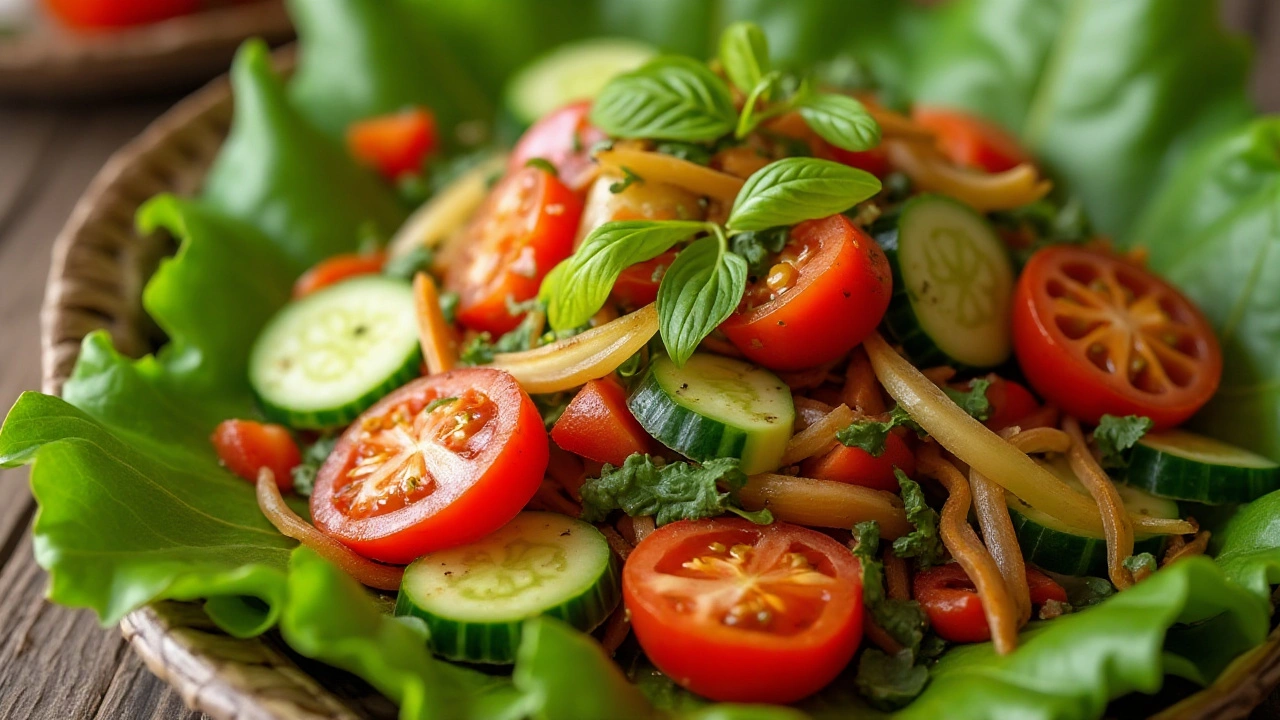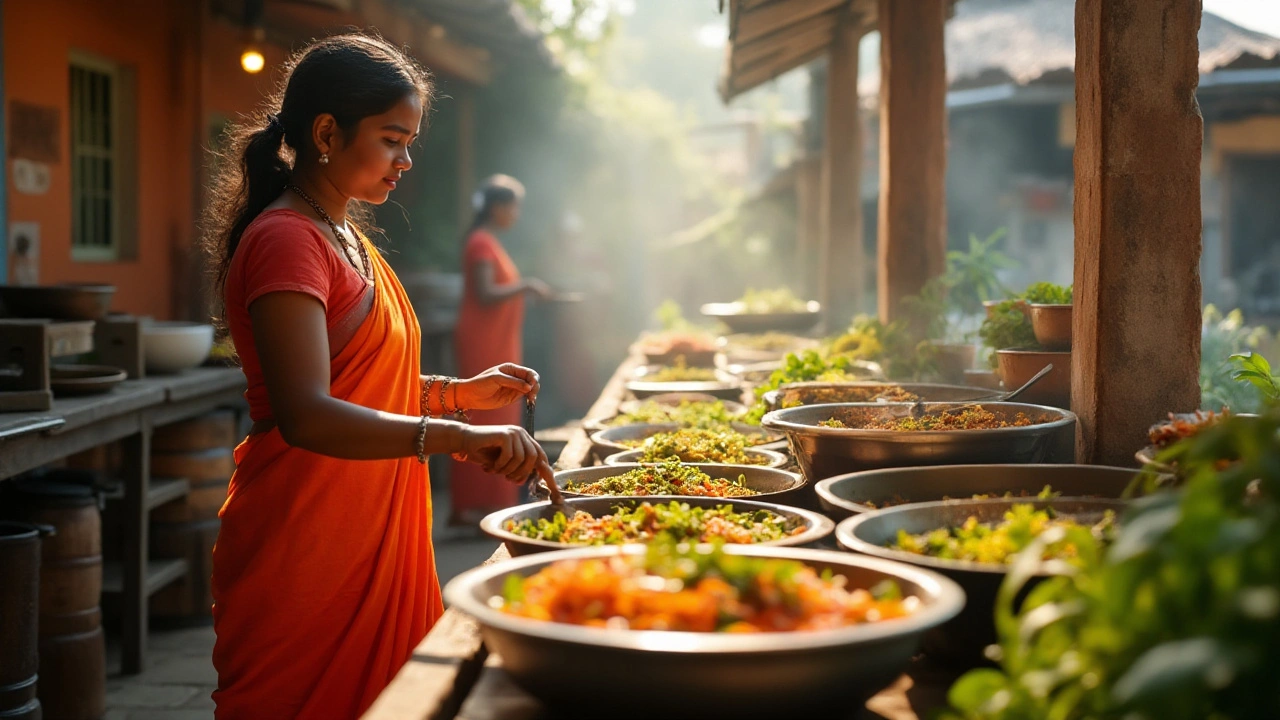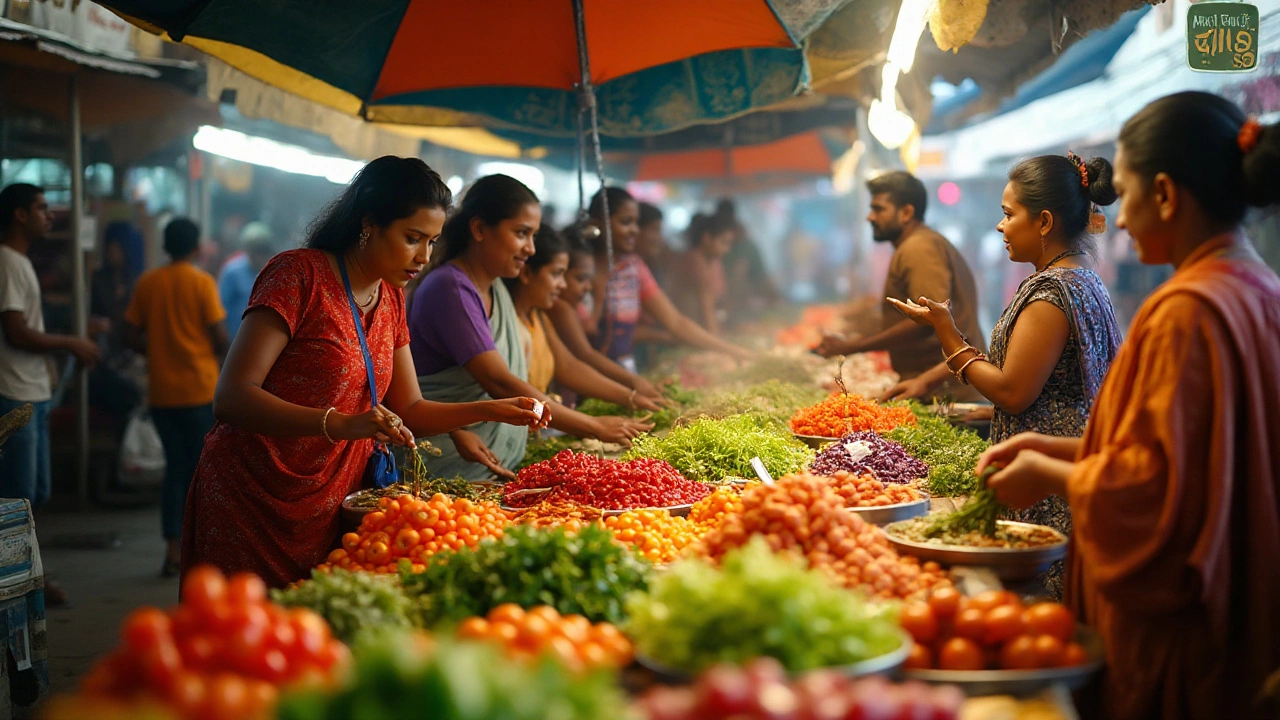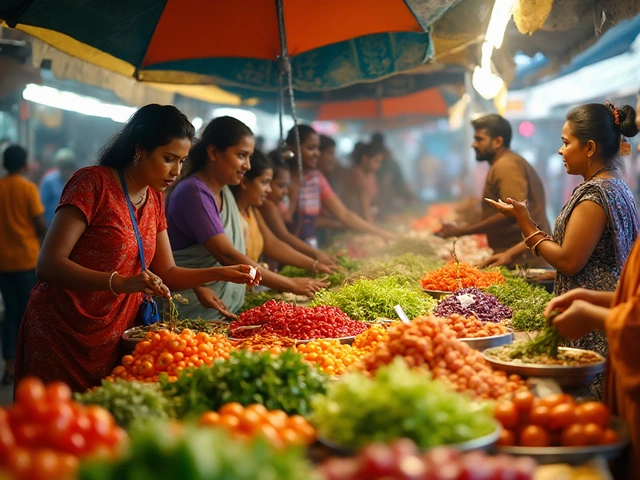When wanderlust leads you to the charming landscapes of South India, the local cuisine becomes a highlight of your adventure. Among the myriad of spicy curries and steaming dosas, the humble salad may catch your eye. While it promises a freshness one might crave amidst the heat, you might wonder about its safety.
Fear not, for this guide sheds light on whether you can safely indulge in those crisp greens while exploring the southern realms of India. Join us as we navigate through the essential precautions and cultural nuances surrounding salad consumption, ensuring that your culinary experiences remain both delightful and safe.
- Understanding Salad Preparation in India
- Potential Risks and How to Mitigate Them
- Choosing the Right Places to Eat
- Tips for Safe Salad Consumption
Understanding Salad Preparation in India
Salads in India are a delightful mix of colors and textures, often featuring a variety of vegetables like cucumbers, tomatoes, onions, and carrots. The local flair is unmistakably added through traditional spices and tangy dressings. Yet, the basic rule remains – the fresher, the better. When exploring the culinary landscape of South India, understanding how salads are prepared is key to a safe dining experience.
Salad preparation here might differ from what you know elsewhere. Unlike the typical Western salad, Indian versions might incorporate raw fruits or sprouted grains, offering not just taste but also health benefits. But, it is crucial to be aware of the water used in washing these ingredients. Many locals believe that the real challenge is ensuring clean and safe water is used to rinse vegetables and fruits.
"Clean water is paramount in food preparation to prevent food-borne illnesses," says Dr. Mehta, a respected food safety expert based in Mumbai.
Adding to salad safety is the choice of street vendors or eateries. South Indian street food is exhilarating, but it's recommended to exercise caution while indulging, especially in raw food items. Vendors often source fresh produce daily, yet the washing methods might not align with the safety standards you're accustomed to. If you're keen on trying a salad from a street vendor, observing their hygiene practices can be a helpful clue. Also, the time of day matters; opting for food from busy vendors during peak hours ensures quick turnover and fresher ingredients.
One might wonder about the differences between salads in different parts of the world. It's fascinating how each region tailors its ingredients to local palates. In India, salads are often garnished with freshly chopped coriander, mint leaves, and sometimes even sprinkled with chaat masala—a tangy spice mix. This practice highlights the Indian knack for infusing taste into every bite. Moreover, the introduction of yogurt as a dressing adds a probiotic advantage, which not only enhances flavors but supports digestion.
Research shows that consumption of raw foods such as salads can significantly boost nutritional intake when thoroughly cleaned and prepared under sanitary conditions. To put it in perspective, here’s a simple guide:
- Always ensure the greens and vegetables are cleaned with filtered or boiled water.
- Seek restaurants with good reviews on hygiene practices, especially regarding raw foods like salads.
- If unsure about the source of the water, opting for cooked vegetables instead can be a safer alternative.
Whether you are dining at a high-end restaurant or a charming roadside stall, understanding the nuances of salad preparation can help you enjoy these refreshing dishes with peace of mind. The lively and tasty salads of South India add a unique dimension to your culinary journey, but knowledge and caution can help you savor every bite safely.

Potential Risks and How to Mitigate Them
Embarking on a culinary journey through South India is a treat to the senses, but when it comes to enjoying a salad safely, a little knowledge goes a long way. The primary concern with salads lies in the raw nature of the ingredients, which makes them susceptible to contamination. One of the biggest risks is the use of water that might not meet the sanitary standards you are accustomed to at home. According to the World Health Organization, untreated water can harbor a host of pathogens including bacteria, viruses, and parasites, making it the most common source of foodborne illnesses for travelers.
It's not just the water, though. Another concern is the handling of fresh produce. In some regions, hygiene practices might differ, and vegetables might come into contact with contaminated surfaces during the washing and cutting processes. This can introduce additional risks. To mitigate this, you might consider eating only at establishments that appear clean and have good reviews directly related to their hygiene practices. Observing the venue before ordering is often wise; if you see hygienic practices like employees wearing gloves while preparing food, you’re likely in a safer spot.
Another strategy to avoid potential pitfalls is to opt for salads made from produce that has been cooked or peeled. Items like boiled potatoes, cooked beets, or peeled cucumbers can be a safer choice. Additionally, consider bringing your own portable water purifier or choosing restaurants that specifically mention using filtered water. It’s a little effort for peace of mind and your own health. As I've once read in a travel guide,
"In travel, an ounce of prevention is worth a pound of cure."Many travelers find that sticking to simpler options or well-cooked food in regions where they cannot vouch for the water quality helps mitigate risks.
On rare occasions, you might also find relief in consuming salads prepared in temple canteens or high-end hotel restaurants, where hygiene standards tend to be more stringent. It’s a good practice to ask locals or experienced travelers for recommendations, as personal experiences are invaluable. In sum, while the delight of biting into a fresh salad in such a vibrant region may be tempting, these considerations should help you enjoy your meal while keeping any unwanted surprises at bay.

Choosing the Right Places to Eat
Embarking on a culinary journey through South India means immersing oneself in a world of flavors, textures, and aromas. Yet, knowing where to dine safely can elevate your experience significantly, particularly when keen on sampling raw delicacies like salads. Selecting trustworthy dining venues is crucial, especially given the diverse food handling practices across the region. When traveling, it's always a good idea to look for well-regarded restaurants or cafes in popular tourist areas, as they are often accustomed to catering to international standards. Such places tend to provide dishes that have been prepared in hygienic environments, greatly reducing health risks.
One effective strategy is to stick to eateries that are bustling with locals and travelers alike. The presence of a steady flow of patrons often indicates not only delectable fare but also reassuring standards of food safety and quality. Locals are particularly discerning about where they eat, often having favorite spots they frequent; tapping into their knowledge can lead you to places where the salads are both fresh and safe. In thriving cities like Chennai or Bangalore, there are numerous cafes and restaurants known for their adherence to high standards, offering a blend of South Indian classics and contemporary takes on traditional dishes.
Additionally, paying attention to restaurant reviews and online ratings can serve as a beneficial guide when selecting a dining venue. Platforms like TripAdvisor and Zomato compile user feedback, providing insights into not only the taste but also the safety and sanitation of each eatery. This crowd-sourced information can help you make informed decisions, especially if you have specific dietary preferences or concerns about raw food consumption.
Prioritizing Food Hygiene
Pay attention to visible markers of cleanliness, such as how food is stored and displayed. Ensure that raw ingredients like lettuce and tomatoes are kept refrigerated, as higher temperatures can precipitate bacterial growth. If a restaurant's kitchen is within view, observe whether staff members are wearing gloves and hairnets while preparing food. Such practices indicate a commitment to maintaining high standards. Equally important is ensuring the water used in making dressings is purified. Inquire without hesitation about their water purification methods. A simple question could save you from unwanted troubles in your gut.
"Eating street food in India does not have to be risky. Just look for vendors that locals trust for their bustling stands and busy grills ensure high turnover, meaning fresher ingredients." — Anjali Pathak, noted chef and culinary author.
Avoiding street vendors for raw foods may be prudent unless you see significant evidence of fresh water and modern culinary practices. This isn't to say street food in South India isn't delightful; however, when opting for fresh greens, it's best to err on the side of caution. Your safety while indulging in South Indian culinary gems is of utmost importance. By strategically selecting where to eat your salads, you not only protect your health but also enhance your gastronomic experience in this culturally rich and diverse region.

Tips for Safe Salad Consumption
When traveling through South India, you will likely find yourself tempted by the fresh-looking salads offered by vibrant local eateries. But how do you ensure these refreshing dishes don't compromise your health? Understanding the food safety landscape is essential. First, consider that tap water is often used to wash veggies, and this could be a pitfall due to potential waterborne contaminants. It's wise to request a salad wash in bottled water if possible or do so yourself if you're preparing your meals. In restaurants, observe hygiene practices: clean surfaces and utensils indicate safer practices, boosting your confidence in their salad offerings.
Additionally, examine the salad ingredients themselves. Leafy greens and raw vegetables are the stars here, but they also harbor the most risks. Prioritize consuming veggies you can peel like cucumbers and carrots; this simple act can physically remove bacteria. Also, washed vegetables may have traces of pesticides left behind, so organic produce is preferred when available. Seek out well-established or reputable dining spots known for their attention to food hygiene, as they are more likely to follow stringent safety protocols.
Incorporating Local Wisdom
Engage with locals and ask for recommendations where fresh produce is handled with care. Often, the best-kept secrets come from someone who's lived in the area and understands the subtleties of local food safety practices. It's not unusual to find a street vendor with a spotless reputation and generations of culinary expertise to lean on. Frequenting these stalls can transform your food experience. As travel expert Pauline Frommer wisely put it,
"Authentic travel isn't just experiencing new things, it's understanding and living through local eyes."Don't shy away from small family-run eateries that uphold traditional washing methods that stem from ancestral knowledge, giving you a taste of genuine, safe local delicacies.
Practical Steps and Precautions
Consider employing some tried-and-true methods to ensure safe salad consumption. A simple yet effective practice is to use natural disinfectants. Drizzling vinegar or a fresh lime squeeze can reduce bacteria significantly. Incorporate these acidic elements into your salad not only to elevate the taste but also to protect yourself from potential microbial threats. Prepared salads sitting out for prolonged periods are best avoided, as they can become breeding grounds for bacteria.
- Always choose freshly prepared salads over pre-made options.
- Ensure ingredients like meats, cheese, or eggs, which often accompany salads, are cooked properly before added.
- Manage your expectations – not every salad will match your home standards, embrace the culinary adventure while prioritizing your safety.






